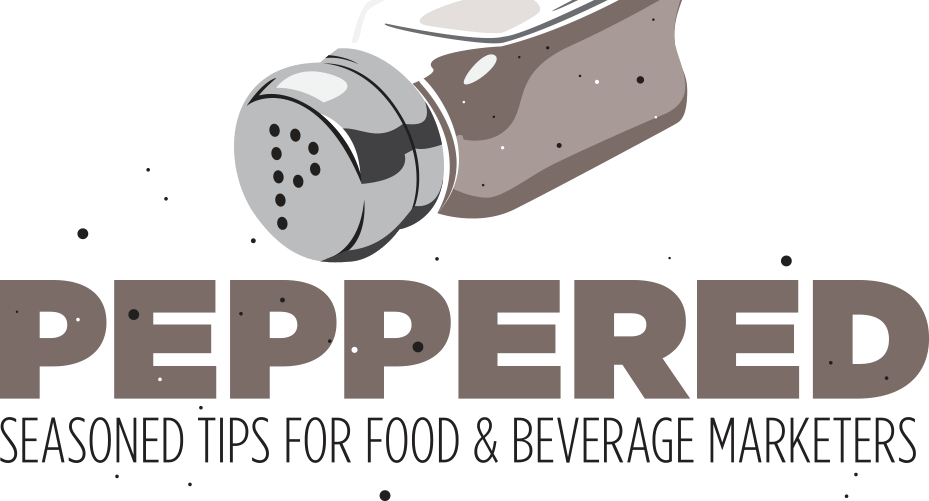Last week, we touched on the importance of your packaging (hint: it’s the single-most critical and cost effective marketing tool you have) and the first sign (is it more than 3 years old?). If you missed the article, you can find it here [link]. This week, we’ll cover signs 2 – 8 that you should consider a refresh.
Sign 2 — Was any research done to optimize your packaging in the first place?
Research is like having headlights on your car at night. You might make it home without them. But you’ll never regret seeing that unexpected curve up ahead. In the food arena, where you don’t get second chances, it’s often very cheap insurance. The good news is that in the 21st Century, even primary research is more affordable than ever. Quantitative, qualitative, A&Us, even eye tracking studies are now within the reach of smaller companies. And you better believe the bigger brands aren’t making a move without it.
Sign 3 — Are you following the latest regulations?
Are you incorporating the newest Facts Up Front iconography on your packaging? If not, you’re missing an entire generation of shoppers. Are you up to date on the latest allergen and GMO disclaimers? And while the FDA doesn’t have the manpower to go around and check your compliance, your competition certainly does. And the FDA takes phone calls. Consider that while you’re making those changes (and you need to make new plates anyway), it’s an excellent time to reassess the rest of your package.
Sign 4 — Have you introduced new line additions since your packaging was designed?
Packaging on-shelf is a delicate balance between carving out a visual “billboard” and allowing consumers to quickly differentiate between your varieties. If you’ve added more than a SKU or two since your last refresh, you might be hurting yourself more than you’re helping. While you’re at it, now might be a good time to revisit the optimization of your product line. Will that next trendy flavor you plan on launching get you incremental sales, or just cannibalize your existing line? Are you sure of that? Or are you just guessing? (see Sign 2)
Sign 5 — Was your last refresh helpful, harmful or just different?
Do you understand what’s truly distinctive and can be leveraged about your brand equity? Or did your last refresh just try to make it look nicer? Worse than that, did your last refresh completely throw out your existing design in an effort to make something dramatic, at the expense of your hard-fought equity? Careful evaluation of equity assets is particularly important for legacy brands.
Overall, it’s a tricky tightrope of keeping your brand fresh and relevant and enticing new consumers, without confusing, alienating or losing current customers. Keep in mind that when a package design changes, the obvious question in consumers’ minds is, did the product change as well? It’s an important consideration, and one that requires experience and skill to be handled properly.
Sign 6 — Is your messaging hierarchy in balance?
Here’s the math. 30,000+ new grocery products introduced each year. Average time spent looking at each product, less than 3 seconds. Depending on the source, estimates are that 70%–90% of these fail. Now, with all this in mind, can you definitively say that your messaging hierarchy is what it should be? Are you quickly and clearly communicating your brand promise, personality, distinctive assets, product attributes, appetite appeal and flavor variety in the right order, all at a glance? Again, are you sure of that? Or are you just guessing? (see Sign 2 again)
Sign 7 — Does your photography stop them in the aisles?
People eat with their eyes first. That means that the photography on your package has the power to make or break your sales. For most of the history of the world, eating something that wasn’t quite right could literally kill you. So subtle indicators of what’s good or bad to eat are hardwired into the decision making process, expressed as powerful emotions. A shift of color or lighting on a box of diapers means nothing. The slightest tinge of green on your photo of meat makes it literally repulsive. Likewise, when the perfect balance of styling, lighting, propping, and composition align, there is almost nothing as enticing and compelling as a mouthwatering photo.
Even if your photography was great a few years ago, it should be reevaluated by today’s standards. Camera and lighting technologies have advanced radically in the past few years alone. And selective focus isn’t just a good way to control consumer eye flow; without it, your product looks flat, old and boring. Simply put, your packaging is critical, and your photography is the cornerstone of it all.
Sign 8 — Who developed your packaging?
If your answer was anything except a company who specializes in food and beverage branding, you should get a second opinion. With food packaging, it’s the nuances that make all the difference. Brand hierarchy, personality, eye flow, texture, color, propping, and even descriptors are all absolutely critical. And your package is only as strong as the weakest element.
There used to be a store on the boardwalk at the Jersey shore called “Henry’s Fine Jewelry & T-Shirts.” Usually, when we tell that that to somebody, they laugh. It’s obvious (to everyone except Henry) that the “T-Shirts” part of the name negates the “Fine Jewelry” message. But if you’ve got any part of your package that doesn’t resonate properly with consumers, that’s exactly what you’re doing. If your branding, or your message, or your claims, or your photography, or your graphics, or your nutrition facts don’t all align, you’ve got fine jewelry and T-shirts for sale.






